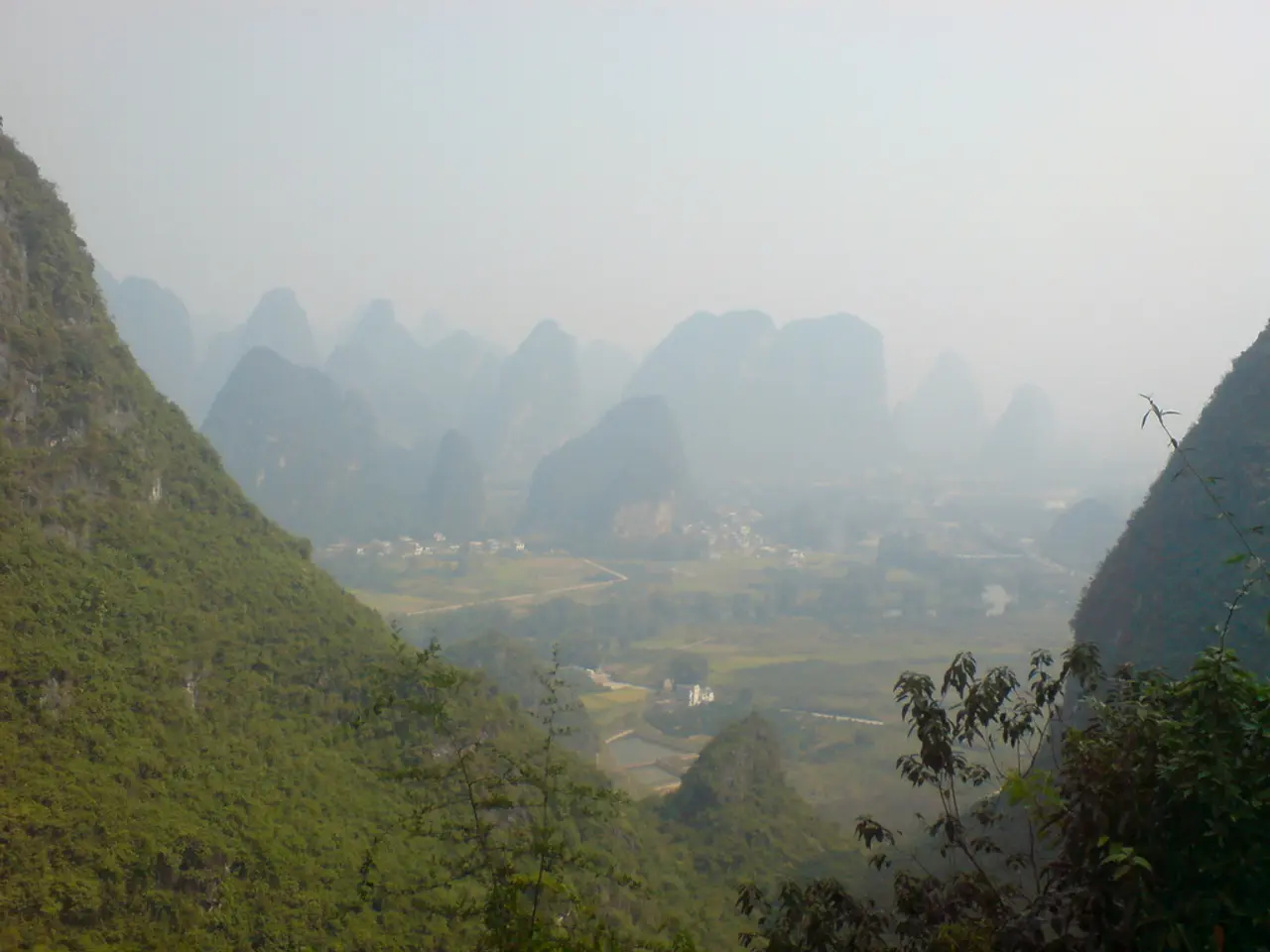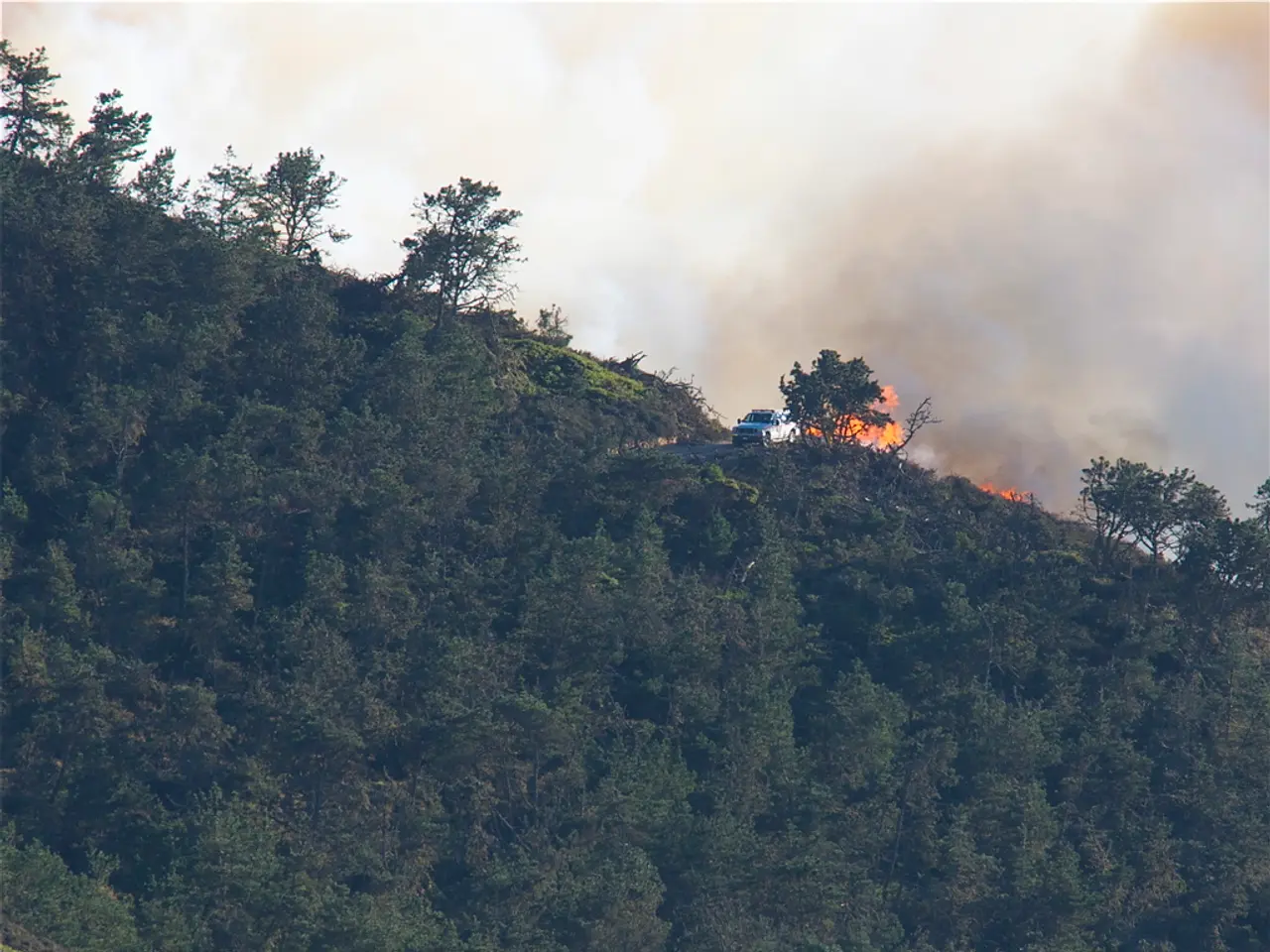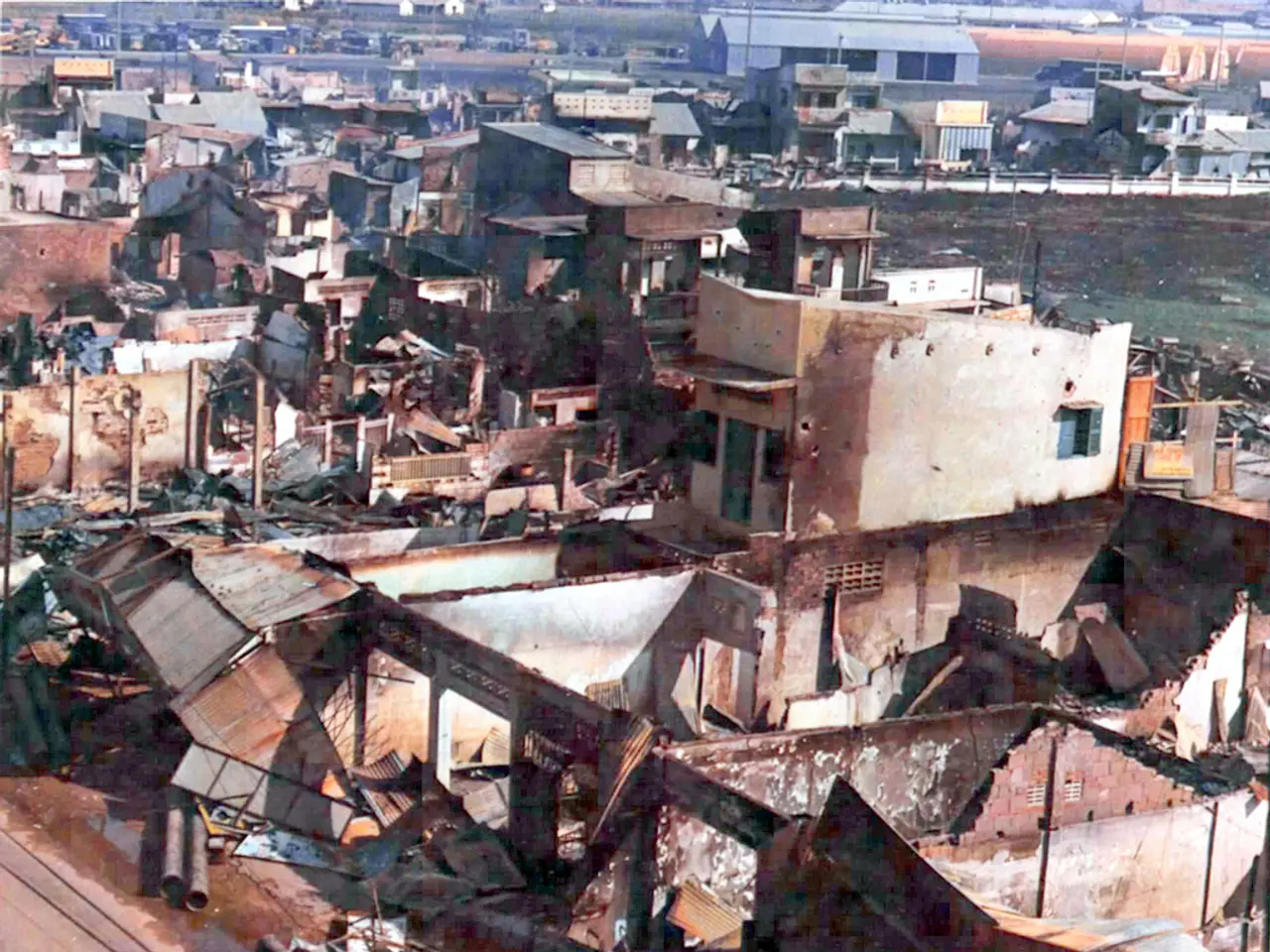Uttarakhand Flooding: Understanding Cloudbursts and Their Causes
Heavy Rainfall Strikes Uttarakhand: Cloudburst Triggers Flash Floods in Dharali Village
A cloudburst, an extreme amount of rainfall in a short period over a small geographical area, struck Dharali village near Harsil in Uttarakhand's Uttarkashi district on Tuesday. This sudden downpour led to flash floods that swept away several houses, causing widespread destruction of homes, roads, and public infrastructure.
Cloudbursts are typically associated with warm, moist air rapidly rising over mountains, where it cools and condenses quickly due to orographic lift. This intense rainfall can also be exacerbated by atmospheric conditions like strong convection, mixing of warm and cold air, and high moisture at altitude.
The sudden heavy rains from the cloudburst saturated the ground quickly, and the water rushed down mountain slopes into valleys and river channels. Due to the steep terrain, water accumulated rapidly and flowed with high velocity, overwhelming rivers and drainage systems, causing sudden flooding downstream. Flash floods triggered by cloudbursts often carry debris, worsen landslides, and result in extensive destruction of infrastructure, displacement of people, and loss of life.
In the case of Dharali village, many people are feared missing due to the flash floods, and the Army has moved into the area to assist in search and rescue efforts. The Uttarakhand Chief Minister Pushkar Singh Dhami has deployed emergency teams for rescue operations in the affected village.
Cloudbursts are not uncommon in hilly or mountainous regions, as the topography forces moist air upwards rapidly, causing rapid cooling and condensation that leads to localized torrential rain. These events can disrupt power, water supply, and communication networks in affected regions, leading to long-term livelihood and economic losses.
Measures to mitigate the impact of cloudbursts include early warning systems and weather monitoring in vulnerable regions, evacuation protocols during the monsoon season, and awareness and preparedness in local communities. By taking these precautions, communities can reduce the risk of injury, loss of life, and property damage caused by cloudbursts and the resulting flash floods.
Unfortunately, the destruction caused by cloudbursts can also accelerate environmental degradation, including soil erosion and forest loss. The cloudburst in Dharali village is a stark reminder of the need for sustainable development practices in mountainous regions prone to such events.
[1] Orographic lift and cloudbursts: https://www.researchgate.net/publication/331081362_Orographic_cloudbursts_and_flash_floods_in_the_Himalayan_region [2] Cloudbursts and flash floods: https://www.nature.com/articles/ncomms14962 [3] Cloudburst in Dharali village: https://www.ndtv.com/india-news/uttarakhand-cloudburst-in-dharali-village-near-harsil-triggers-flash-floods-many-fear-missing-2867445 [4] Cloudbursts and thunderstorms: https://www.britannica.com/science/cloudburst [5] Impacts of cloudbursts: https://www.sciencedirect.com/science/article/pii/S1877042818300558
- The cloudburst in Dharali village, exhibiting the effects of orographic lift, highlights the critical role environmental science plays in understanding climate-change patterns and the increased occurrence of extreme weather events.
- As the aftermath of the cloudburst in Dharali village underscores, the weather's unpredictable nature and its impact on the environment necessitate a focus on sustainable development practices in mountainous regions to limit the escalation of environmental-science issues like soil erosion and deforestation.








